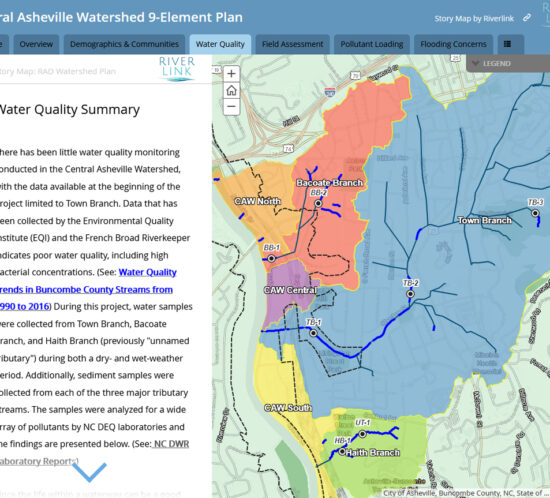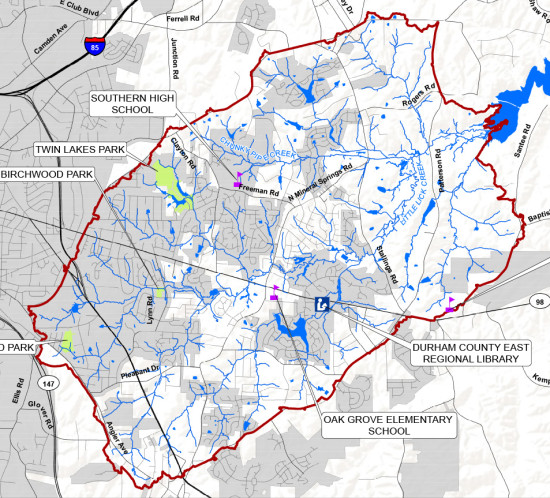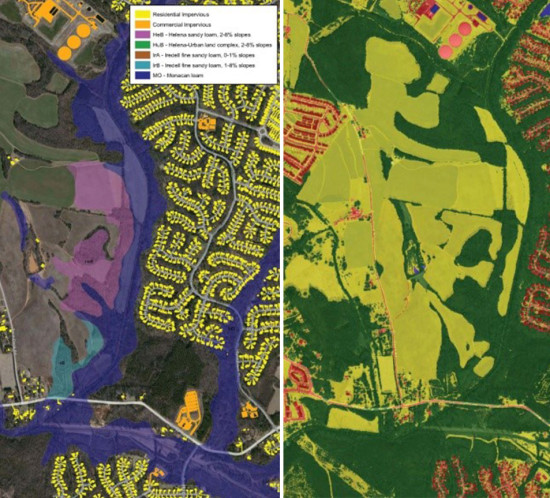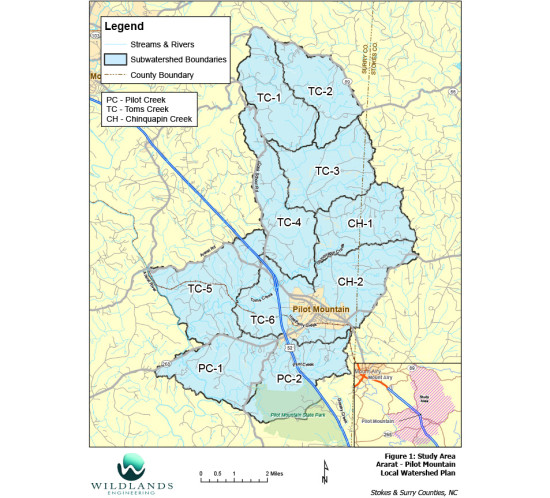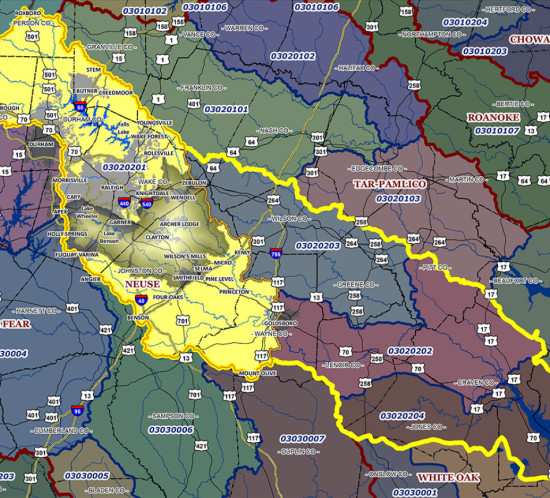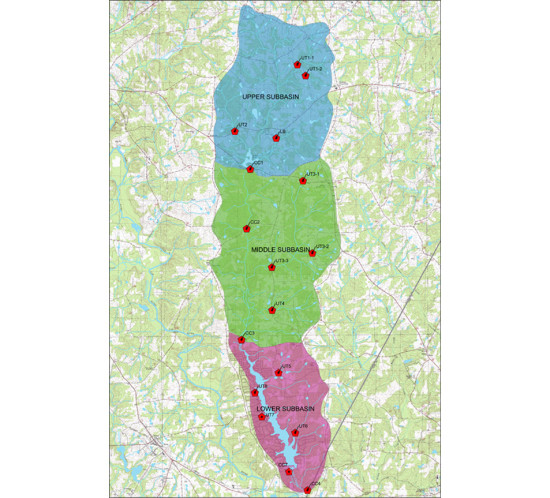Central Asheville Watershed Restoration Plan
Central Asheville Watershed (CAW) Restoration Plan
Client: Riverlink
Location: Asheville, NC
Wildlands developed this web-based, GIS-centric watershed plan for the CAW in ArcGIS online (AGOL). The CAW 9-element watershed plan encompasses several urban tributaries that drain the River Arts District (RAD) and a large portion of downtown Asheville to the French Broad River. This roughly two-square mile watershed was a priority for RiverLink due to its complex environmental, economic, and social equity issues. The streams covered in the plan – Town Branch, Bacoate Branch, and Haith Branch – are all impacted by numerous issues, including stormwater runoff from developed areas, piped streams, and aging infrastructure. Major watershed stressors identified during the assessment include:
- Impervious surface runoff
- Erosion and stream sedimentation
- Flooding
- Bacteria
- Illicit discharges
- Metals and petroleum compounds
- Trash
- Invasive plant species
Over 75 potential watershed improvement projects were identified that would contribute to the watershed restoration goals; and two of the three major tributaries draining the CAW will be recommended for inclusion on the 303(d) list of impaired waters for fecal coliform bacteria by NCDENR. Overall data integration, field data collection, and spatial decision support for the entire project team was facilitated by Wildlands through a combination of AGOL web and mobile device applications throughout every phase of watershed plan development. AGOL was, and will continue to be, used as a data hub from which to store, create, manage, retrieve, and disseminate real-time watershed planning information for the CAW by RiverLink and several participating stakeholders, including the City of Asheville. The plan targeted ways to create more seamless linkages between various data sources already being gathered at the municipal and regional level in order to bring more robust data together for this and future watershed planning efforts. Map journal is featured below or click on the following link: https://bit.ly/3i141jS



